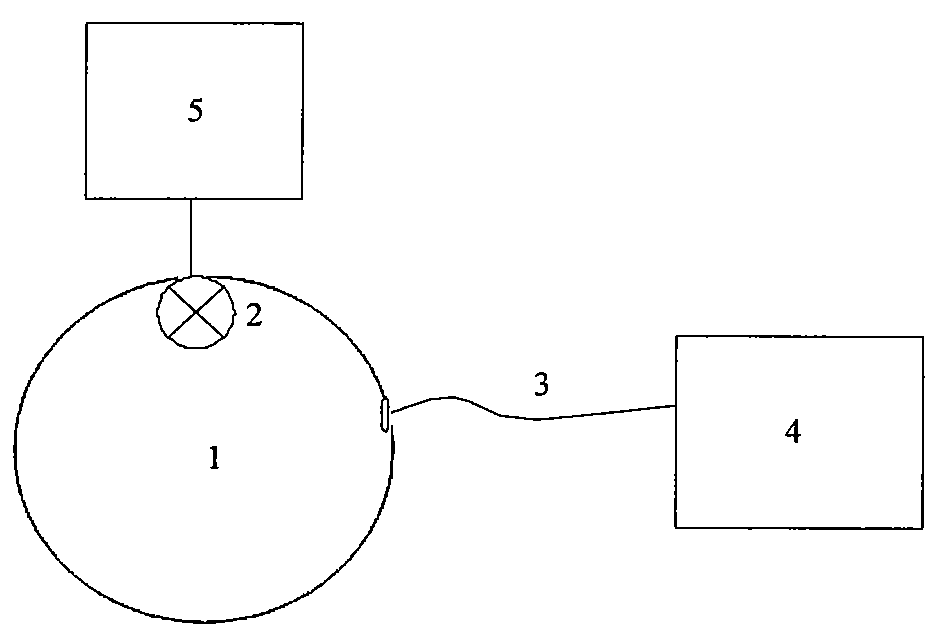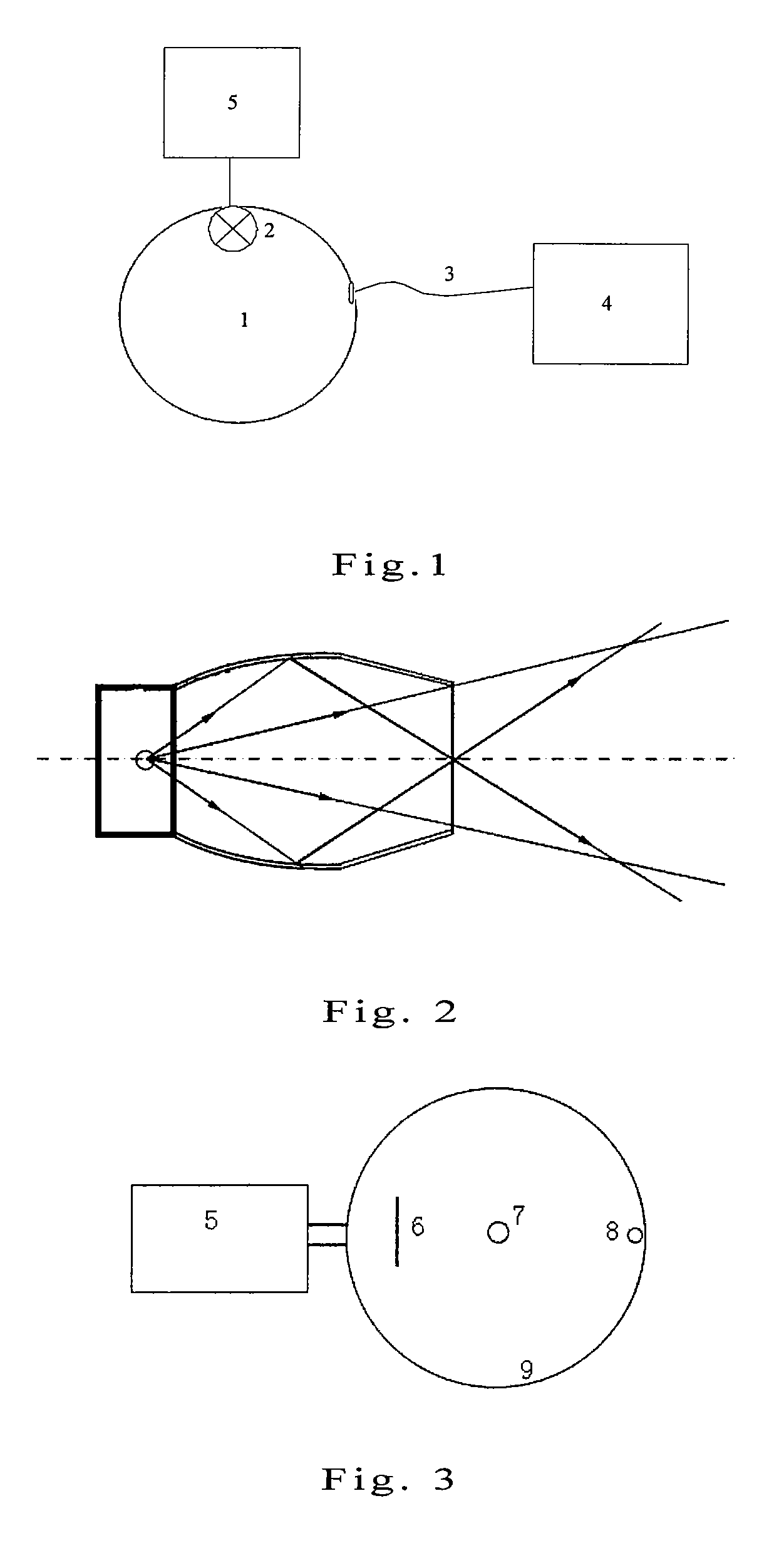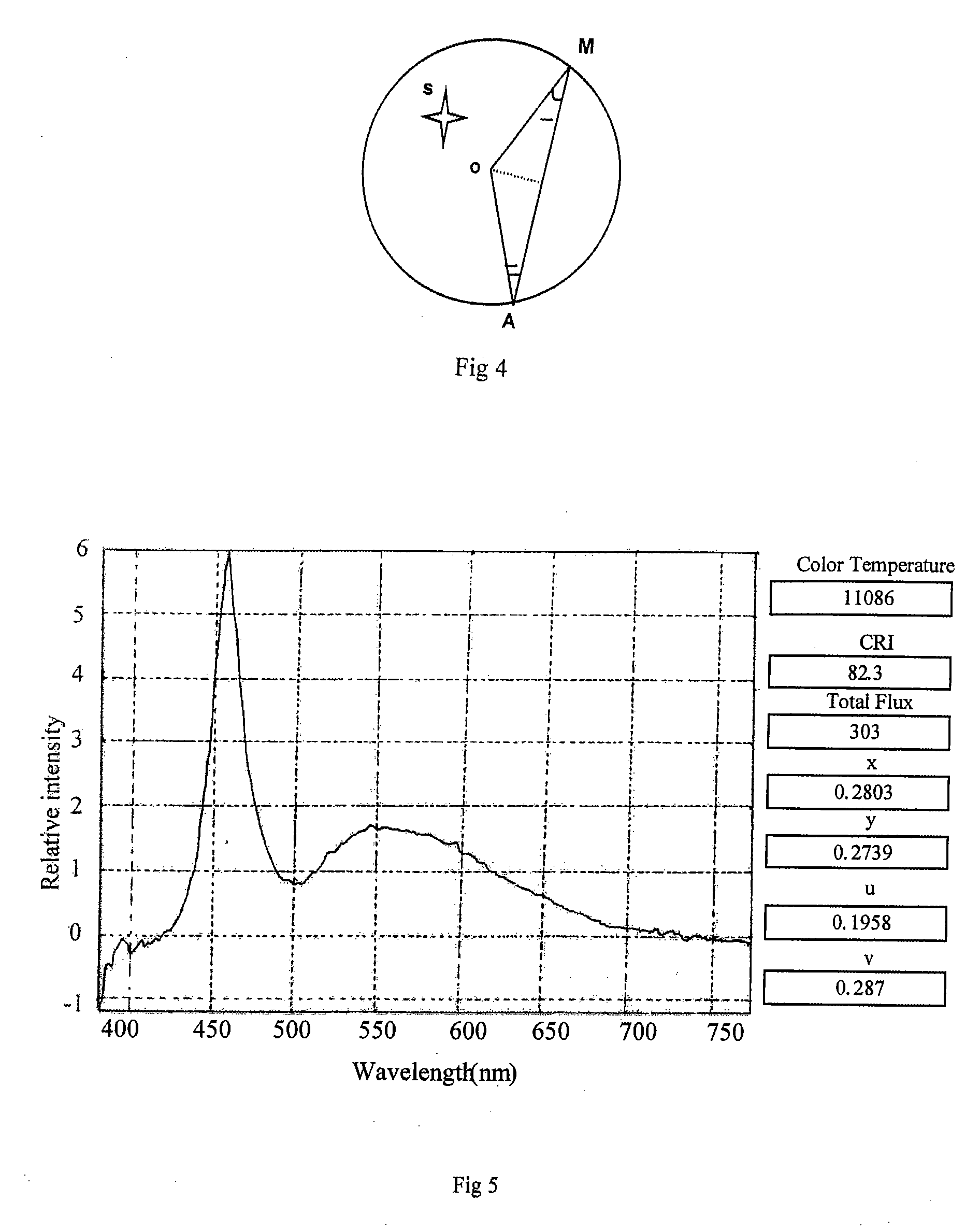Equipment and method for led's total luminous flux measurement with a narrow beam standard light source
a technology of leds and light sources, applied in the field of luminous flux measurement, can solve the problems of blue/red significant error in difficulty in luminous efficiency measurement of light sources, and total luminous flux measurement, so as to reduce the self-absorption influence and achieve accurate measurement results.
- Summary
- Abstract
- Description
- Claims
- Application Information
AI Technical Summary
Benefits of technology
Problems solved by technology
Method used
Image
Examples
example 1
Using the Measurement Equipment of LED's Total Luminous Flux With a Narrow Beam Standard Light Source
[0072]The measurement equipment of LED's total luminous flux with a narrow beam standard in this invention consists of the integrating sphere without baffle, the light source's driver, the narrow aperture fiber and the CCD based multi-channel spectrometer.
[0073]1. Standard Lamp
[0074]We use narrow beam standard light source is not to simulate LED, but to make all the lights emitted from the standard light source enter into the integrating sphere. The light exit aperture of this narrow beam must match the entrance of the integrating sphere. At the same time, this standard lamp must obtain good stability, have a wide spectrum, and it must be easy to be calibrated. We use a halogen lamp with a color temperature of about 2800K, which emits narrow beam by optical design as shown in FIG. 2.
[0075]2. CCD Based Multi-Channel Spectrometer
[0076]In conventional measurement of photometry parameter...
example 2
Measurement Example
[0078]The measurement method contains steps such as calibration of the standard light source, measurement of LED sample lamp and processing of measurement results.
[0079]1. Calibration of the Narrow Beam Standard Light Source
[0080]Because this standard light source is the standard lamp for both spectrum and luminous flux, this light source's calibration for spectrum and total luminous flux must be taken into account.
[0081]Luminous flux calibration: use small goniophotometry in the measurement, its angular resolution is no bigger than 0.2 degree, detector's V(λ) matching error is less than 3%, and it must have a good stability. This method is suitable for transfer the luminous flux.
[0082]Spectrum calibration: use small integrating sphere, on the surface of the sphere open a hole for placing the narrow beam standard light source, and place a conventional color temperature (spectral distribution) standard lamp of close color temperature for transfer the spectrum distr...
example 3
Comparison of Measurement Results
[0089]Use American labspere's LED-1100 goniophotometry to measure the luminous distribution curve of same LED, and from calculation we know that luminous flux of LED is 3.05 lm, while the result is 2.78 lm using the traditional equipment.
Standard value measured byMeasurement resultMeasurement result ofLab spere equipmentof this inventiontraditional equipment3.05 lm3.03 lm2.78 lm
[0090]Thus it can be seen that the measurement error of this invention is 0.6%, while the measurement error of traditional method is 8.85% because of the light source and baffle's self-absorption.
PUM
 Login to View More
Login to View More Abstract
Description
Claims
Application Information
 Login to View More
Login to View More - R&D
- Intellectual Property
- Life Sciences
- Materials
- Tech Scout
- Unparalleled Data Quality
- Higher Quality Content
- 60% Fewer Hallucinations
Browse by: Latest US Patents, China's latest patents, Technical Efficacy Thesaurus, Application Domain, Technology Topic, Popular Technical Reports.
© 2025 PatSnap. All rights reserved.Legal|Privacy policy|Modern Slavery Act Transparency Statement|Sitemap|About US| Contact US: help@patsnap.com



